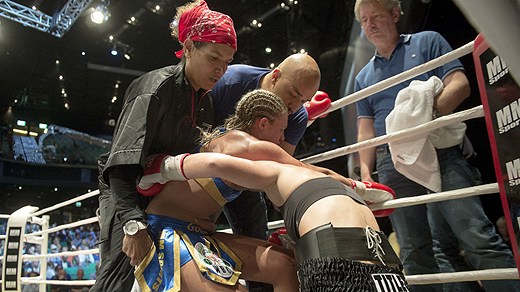Caregiving for a person with any sort of cognitive degeneration is never for the faint of heart.
What’s breathtaking are the decision making processes one goes through for issues large and small. The hardest have to do with health and contending with making choices on behalf of another. At times it feels as if one is skidding across a slippery floor; stepping carefully but with uncertain footing–an apt analogy for the feelings of inadequacy that surface in the throes of working through the decision tree.
Meanwhile, I woke up at about 5:30 in the morning on Monday to the sound of a loud thud. The last thing I could have imagined was hearing Jed’s voice calling out, “help me, get an ambulance, call an ambulance,” in the saddest, softest tones possible.
I quickly surmised that he had either fallen out of bed or fell as he was stepping on to the floor. I’ll frankly never know, but on his way down, he sustained a small laceration on his ear, which bled profusely, along with a mixture of confusion and fear as he struggled to get up.
Helping him to the bed, my next task was to soothe him, while taking his vitals, dressing his wound, and eventually assisting him to the bathroom. Quite surprisingly, he was able to walk there and back on his own with a determined assurance. He was also able to communicate readily by that time, and with no obvious injuries other than his ear, I made the judgment call to forgo an ER run just then, in favor of letting him rest and get back to sleep for a while. I on the other hand, watched, fretted, listened to his breathing, and worriedly scoured the internet for all things falls and traumatic brain injuries.
About nine in the morning I left a message with his neurologist. I spoke with the nurse from the practice around one or so, and at that point, agreed to go to the ER to ensure there were no internal brain bleeds, et al. I had already been giving him a concussion protocol for a mild traumatic brain injury, (thanks to Izzi), but as he tends to be confused in the morning, following it was a bit tricky. He also noted feeling “fuzzier,” so going to the ER made sense at that point–especially since it was the same hospital chain as his neurology team.
 A car service ride later, we were fairly immediately brought to a room in the facility, where he was promptly poked and prodded for a couple of hours including vitals, EKG, CT scans, and a full blood work up looking for signs of head and neck trauma, and potential causes for the fall.
A car service ride later, we were fairly immediately brought to a room in the facility, where he was promptly poked and prodded for a couple of hours including vitals, EKG, CT scans, and a full blood work up looking for signs of head and neck trauma, and potential causes for the fall.
Luckily, his brain did not sustain any injuries, but he did have a couple of anomalies in his bloodwork that I’ll be following up on over the coming days–reminding me how much I forget he is also a man in his 70s and prone to the vicissitudes of aging.
I should add a word about ER visits with a dementia patient. Impatience does not begin to describe what happens when the tests are completed. I also didn’t bring water with me (tip for the future)–so the grumps were exacerbated by a bit of dehydration until I grabbed some from a nurse. My challenge was engaging him in things to do while we waited for test results, so out came the iPhone with varying Spotify lists and YouTube videos. He found his favorite; however, on his own–folding his bed sheets, which gave him something to do for a good 15 minutes or so.
Once home, I’m not certain who was more tired, but we managed a quiet few hours. Izzi had joined us by then which gave Jed a wonderful boost, and afforded me a few minutes to collapse in bed.
I’m still assessing what happened and its meaning moving forward–aside from the knowledge that I need to figure out how to make the bed area safer, and really start to think through a better “to go” plan for any future emergency situations. I also always tend to think more about the effects of his cognitive decline and less so about the other things that might effect his health. And yes, I do have my work cut out for me to fortify those aspects of his care as even with once yearly visits to the internist, things happen.
Right now, I’m just taking some deep breaths and reminding myself that looking forward is always an unknowable set of possibilities that one must be open to. That, and a decent night’s sleep.







